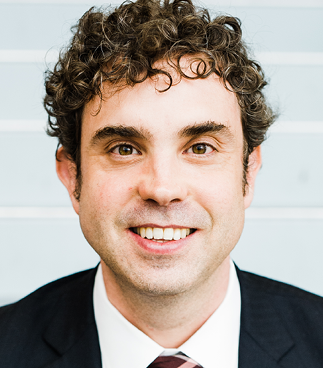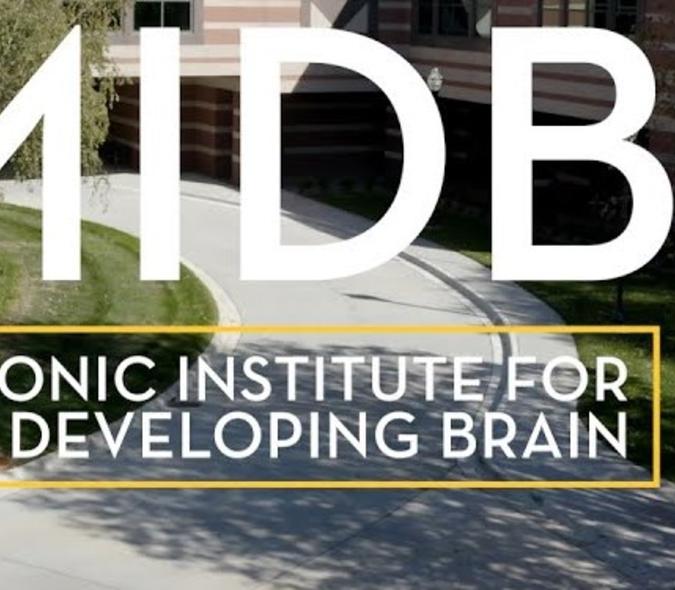
Multiple perspectives help discover something surprising about sleep and its importance to neurodevelopment
Sleep. Research – and personal experience – tells us how important it is to get it. Work done by a multidisciplinary team that included psychiatrist and neuroscientist Alexander Herman, MD, PhD, assistant professor in the U’s Department of Psychiatry and Behavioral Sciences, put sleep’s importance in a new light – especially for the developing brain.
In addition to Herman, the research was done by Professor of Integrative Biology and Physiology Gina Poe, PhD; and Professor of Ecology, Evolutionary Biology and Biomathematics, Van Savage, PhD, both from the University of California Los Angeles; Junyu Cao, assistant professor in the Department of Information, Risk, and Operations Management at the University of Texas McCombs School of Business in Austin; and physicist Geoffrey West, the Shannon Distinguished Professor of the Santa Fe Institute in New Mexico.
All those perspectives were critical to achieving the surprising results of their sleep research, according to Herman.
Could this apply to brain development?

The work began almost 15 years ago when Herman (pictured at left), who was then a post-baccalaureate fellow at the Santa Fe Institute, wanted to build on research done by West and Savage. “They had developed a mathematical theory to explain how the amount of time animals spend asleep – and the fraction of time they spend in REM [rapid eye movement] sleep – changes with the size of their body across many orders of magnitude,” explained Herman. He thought the same theory could be extended to brain development.
“We wanted to see if aspects of this theory were useful in understanding changes in sleep that occur during development and what new theory we needed to help understand the total amount of time that babies, children, adolescents, and adults spend asleep, and the time they spend in REM versus non-REM sleep,” said Herman.
Unfortunately, there wasn’t quite enough data at the time to support the work.
Large sleep study analysis
Cao and Savage eventually picked up on where Herman left off. Together, they analyzed more than 60 sleep studies involving humans and other mammals using tools from allometric scaling theory developed by West and Savage. Allometric scaling theory uses principles and equations from physics, such as conservation of energy, to relate important features of a biological system to each other – in this case, metabolic rate, information processing and sleep times. Poe and Herman then helped link the mathematical theory to the basic neuroscience of sleep.
According to a September 18, 2020, Science Codex article about the work, the team, “examined data on sleep throughout development – including total sleep time, REM sleep time, brain size and body size – and built and tested a mathematical model to explain how sleep changes with brain and body size.”
Stunning discovery
As they looked at the data, the researchers made a stunning discovery. “Early in life, the amount of sleep and the large amount of time you spend in a REM versus non-REM state is primarily driven by neuroplasticity – the need for the brain to add and prune synapses to create networks that help us learn about the world,” said Herman. “At about two and a half years of age, however, we discovered a sharp shift that focuses more on repair-driven processes – the need for the brain to rid itself of debris that collects during the day.” That shift occurs at the same relative time in both humans and animals.
This finding is important. “We know that many, if not most, of our mental health issues are neurodevelopmental – they involve processes that change and emerge during different stages of development,” Herman said. “One of the major brain-related processes that changes during development is sleep and the time spent in the REM state.”
“Newborns spend about 50% of their sleep time in REM sleep, with that number falling to about 25% by the age of 10 and continuing to decrease with age. Adults who are older than 50 spend about 15% of their time asleep in REM, according to researchers.” – Gina Poe, Science Codex
Sleep disruption affects neurodevelopment
With this finding in mind, what if there are disruptions to that critical neurodevelopmental REM sleep? “There are all these hints from the literature that show that sleep disruptions are intimately involved with neuropsychiatric conditions such as autism, schizophrenia and depression – conditions that are quite different,” said Herman.
The work the team did is critical for understanding what might cause neuropsychiatric conditions and why they might emerge during different times in development, according to Herman. “It may help us identify the critical windows of opportunity we might have for potential interventions,” he said. It also begs a question. “If sleep disruption is disturbing mental health, how can that help us understand the other processes we should monitor and on which to perhaps intervene,” Herman asked.
Profound implications
Although this work is theoretical in terms of being able to mathematize the processes and make predictions based on it, Herman noted that, “down the road, I think this could have profound implications for sleep-related therapies – either retraining people about how they sleep or using medications to affect sleep patterns.”
In addition to the researcher’s core finding, Herman discovered something that was perhaps even more fundamental to the original work he did with the Santa Fe Institute team. “We developed a common mathematical and linguistic language that allowed Geoffrey, Van, Gina, Junyu, and myself to understand these new areas of neuroscience,” he said. “It was critical to the success of the work, but it takes time and patience.”
Creativity’s importance
Working with this team taught Herman something else. “We can get trapped into thinking about things the same way we’ve always thought about them,” he said. “Reframing our ideas, thinking about different ways of plotting the data in terms of the variables we’re looking at, may enable us to make progress. It underscores the importance of creativity.”



